Join the activities
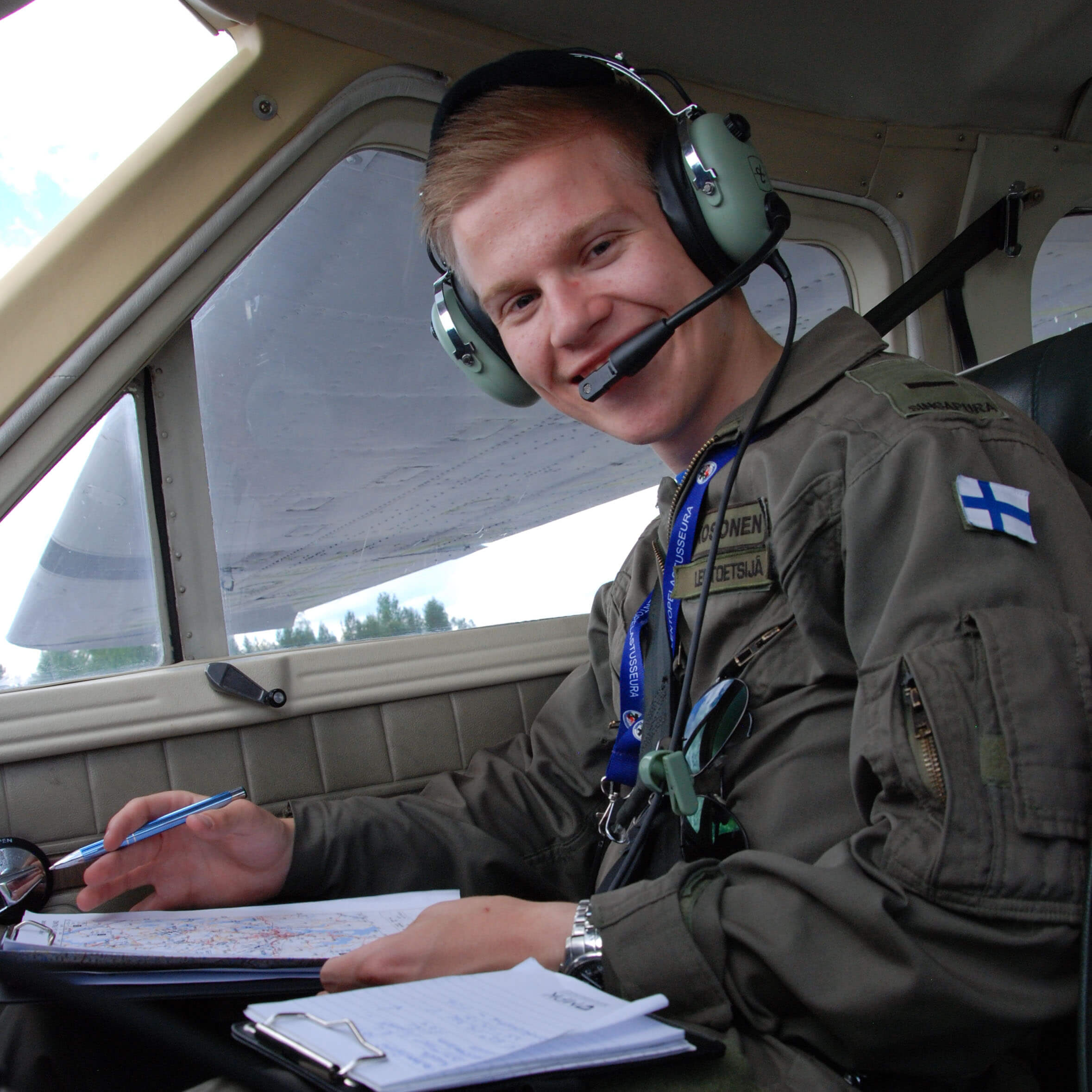
Jesse Kosonen
Air rescuer
Air rescue is started when the authorities contact the duty workers who alert the air rescuers of the nearest air base. We need to get the planes started within two hours from the alert. Flying safe is important. Even though we aim to fly fast, things need to be done with care.
In a search and rescue flight, there are two air searchers, the leader of the operation, and the pilot.
The area to be inspected is flown over systematically so that the entire area is covered. The operation leader verifies that the course if correc..
Air rescue is started when the authorities contact the duty workers who alert the air rescuers of the nearest air base. We need to get the planes started within two hours from the alert. Flying safe is important. Even though we aim to fly fast, things need to be done with care.
In a search and rescue flight, there are two air searchers, the leader of the operation, and the pilot.
The area to be inspected is flown over systematically so that the entire area is covered. The operation leader verifies that the course if correct and that there are no blind spots between the legs.
At the inspection area, the searcher scans the ground or the water with a zigzag gaze, constantly paying attention. If one of the air searchers notices movement, a flash, or anything, they inform the pilot of the direction of the observation and where to fly. The observation is verified, and if it matches the specifications given, the operation leader uses the Virve communications network to announce the coordinates.
In addition to searching for missing persons, we do surveillance flights. We can be asked to check up on public events, traffic nodes, the floods in the Pohjanmaa region, or the forest fire situation.
I’ve been interested in flying since I was a child. When I turned 15, I wanted a glider pilot’s licence instead of a moped licence. I joined the aircraft association in Tampere, and some of the members there told me about the air rescue activities. Soon, I found myself at the Pirkanmaa region motor flight club, which is my base of operations. I have always wanted to help others, and as a air searcher, I can combine my interests.
I took the air searcher course about three years ago. Any healthy person with a desire to help can join the course. The activities are open for all ages, and the tasks will be assigned depending on the person’s qualities. If you’re very passionate about this, you can join the advanced training. I’m currently training to become an operation leader.
My first operation was searching for a missing person in a forest. The person was found, and above all, they were alive. That’s the best feeling I’ve ever experienced. I can still picture that moment.
One of the best parts is also getting to know places you couldn’t get to otherwise. It was great to see the reception for fighter planes and to visit a military flight academy.
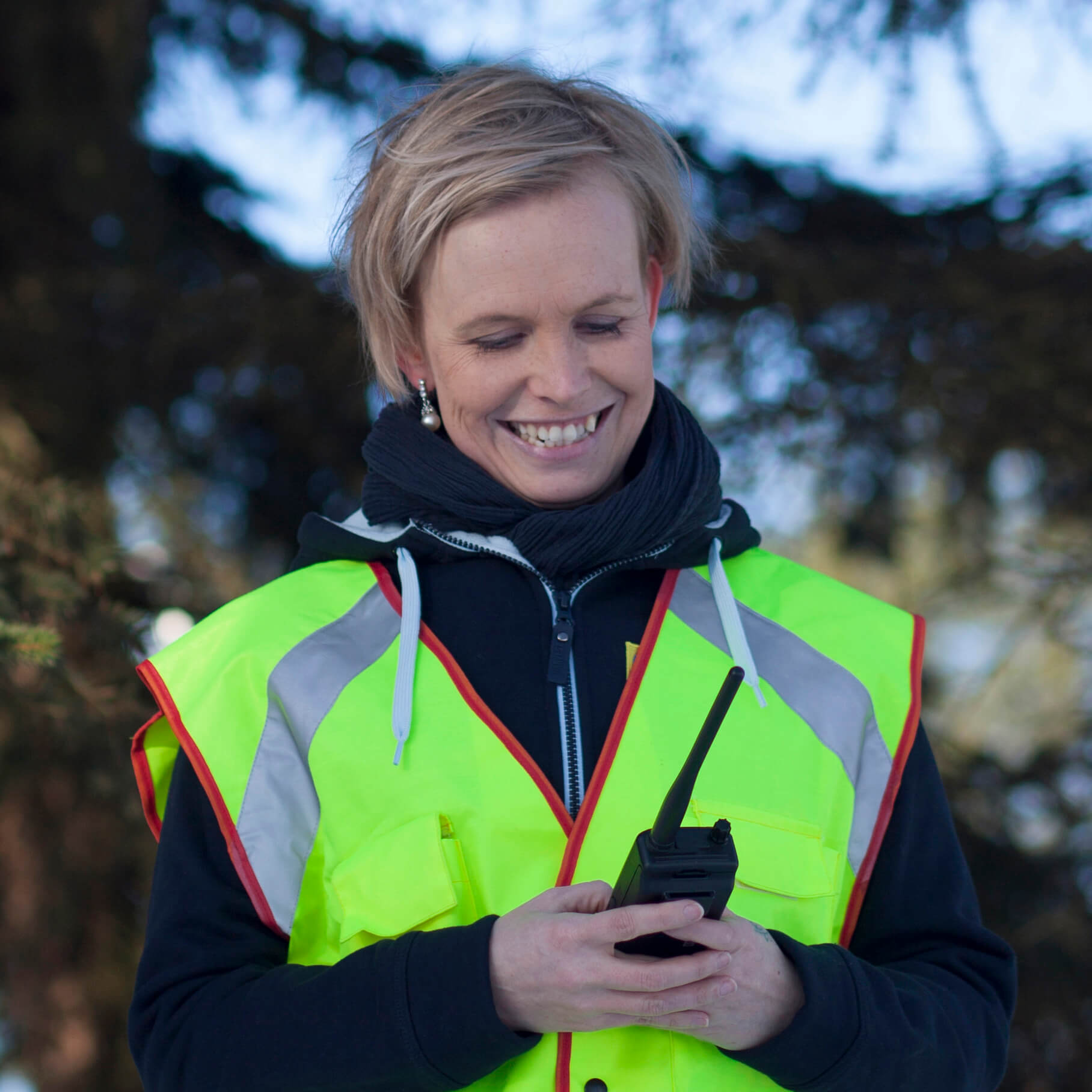
Soile Lehikoinen
Communications volunteer
I was 14 years old when I joined the activities. I had just taken the search and rescue course when someone asked if I was interested in a communications course. There were tasks available right away, and there was actually a shortage of people.
Anyone can become a communications volunteer. I’m familiar with the devices, myself, but they are not my specialty. You don’t need to be able to build a radio link to Australia with a wire hanger and a television cord. There are various tasks within an emergency operation. The communicati..
I was 14 years old when I joined the activities. I had just taken the search and rescue course when someone asked if I was interested in a communications course. There were tasks available right away, and there was actually a shortage of people.
Anyone can become a communications volunteer. I’m familiar with the devices, myself, but they are not my specialty. You don’t need to be able to build a radio link to Australia with a wire hanger and a television cord. There are various tasks within an emergency operation. The communications volunteer can speak on the radiophone, keep a communications diary, offer technical support in building radio towers or base stations, act as a chief of communications, or receive and inspect communications equipment.
I think the best part is that the communication volunteer gets the full picture of the emergency operation: you see and hear the entire situation at once.
The communications need to always be one step ahead so that the operation as a whole is not delayed by a support function. During an emergency, we think how the Vapepa leader will develop the situation. For example, if the search area is expanded, I need to have a base station further away. If 50 more volunteers are called in, I need to check that our communication devices and the network can handle it. And if the missing person is found, the communications volunteer will be the first to know. In that case, it’s good to know where the teams are and where the nearest road is so that you can call an ambulance, for example.
This is worth trying, because as a communications volunteer, you can discover things you didn’t know existed and you didn’t think you could get excited about. That’s what happened to me.
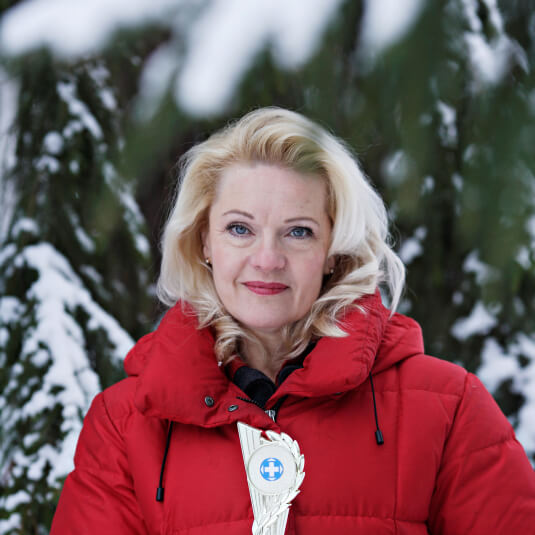
Leena Koivistoinen
Emotional support volunteer
Often, we are the first people the person in need of aid meets after an accident or another kind of crisis. We stay by their side until an authority, such as a social worker, arrives.
As an emotional support volunteer, I help the person to overcome the difficult situation so that they can move on in life. The best way of helping is being present by staying calm and just listening – in a way, you ground the person in that moment and make them understand they are safe. Things will become clear with time.
Even though ..
Often, we are the first people the person in need of aid meets after an accident or another kind of crisis. We stay by their side until an authority, such as a social worker, arrives.
As an emotional support volunteer, I help the person to overcome the difficult situation so that they can move on in life. The best way of helping is being present by staying calm and just listening – in a way, you ground the person in that moment and make them understand they are safe. Things will become clear with time.
Even though the situations – violence, illness, and family crises – sound the same, each situation is different. If the thing or person you’ve lost has had a large role in your life and you have no friends, you may feel like there’s no future. Children and young people, in particular, may not yet have the life experience that teaches you can overcome difficulties. That’s why we have tried to focus on their well-being in particular.
A new volunteer who wishes to join the emergency team will be interviewed. They commit to confidentiality, training, and the common procedures. The volunteers are well looked-after, and after each situation, there’s a debriefing session. We always work in pairs when offering aid.
When I’ve been at a person’s side for the most difficult minutes of their life, and I see them after a year, or three years, doing something like laughing at the grocery store – that’s the best reward. Or when I see a young man with a new girlfriend. Or when a couple who’s had a difficult time walks by me in the street with a baby carriage and don’t even notice me.
The person I’ve helped probably won’t remember me six months after the incident. That’s when I know all is well.
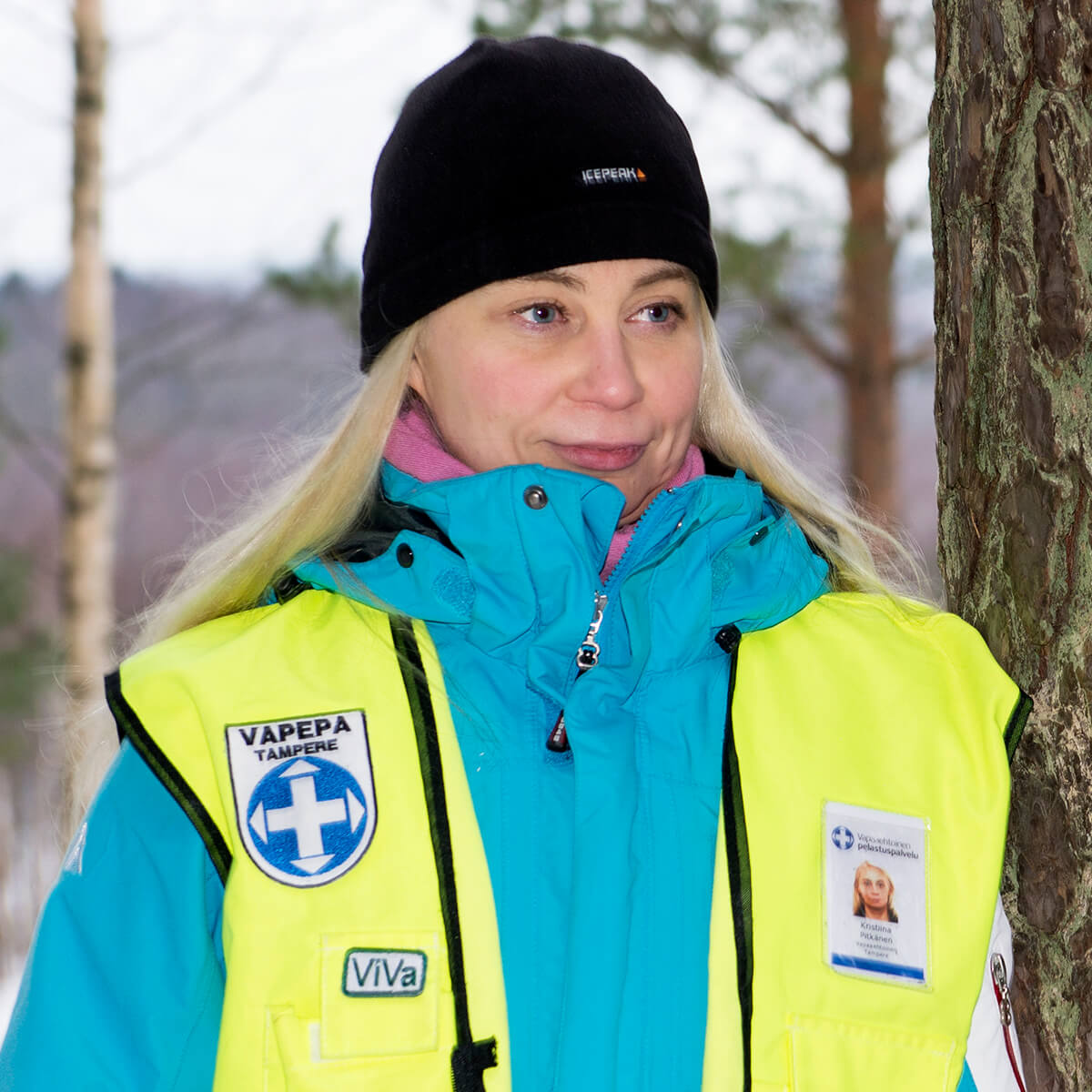
Kristiina Pitkänen
Ground searcher
When I receive the call to search for a missing person, my first thought is if I have all my equipment with me. I always keep my search and rescue backpack ready by the door. In the backpack, I have a torch, a forehead lamp, spare batteries, first aid supplies, a searcher’s vest, a water bottle, and a lunchbox, so that I’m sure I can stay out in the field for a few hours without help.
At the site, we form patrols or a search chain and enter the field in an orderly manner. There are different methods of searching. Usually, we walk..
When I receive the call to search for a missing person, my first thought is if I have all my equipment with me. I always keep my search and rescue backpack ready by the door. In the backpack, I have a torch, a forehead lamp, spare batteries, first aid supplies, a searcher’s vest, a water bottle, and a lunchbox, so that I’m sure I can stay out in the field for a few hours without help.
At the site, we form patrols or a search chain and enter the field in an orderly manner. There are different methods of searching. Usually, we walk in a row or move as car patrols. Sometimes, we also conduct searches downtown. In these cases, we move in pairs, as there’s no need to walk as a long chain on the high street.
We often stay in the field for about an hour or two. It’s the responsibility of the chain or patrol leader to observe how the chain looks and how the searchers are coping. In order to maintain our perception for the duration of the search, we take little breaks every now and then. Searching in the dark is different because you can’t see anything beyond the beam of light. In that case, we move slowly enough to see everything we need to.
Being organised is a good quality for a searcher. When searching, you need to check every bush, tree stump, and stone. Personally, I have never spotted the missing person, but I believe it’s not important who finds them – only that they are found. Every searcher is equally important.
Although search and rescue operations are always serious, and moving in the field is sometimes hard, the atmosphere at the search site is always warm. I’ve become friends with the other volunteers in our time together. The most important thing is that as a field searcher, I get to help other people.
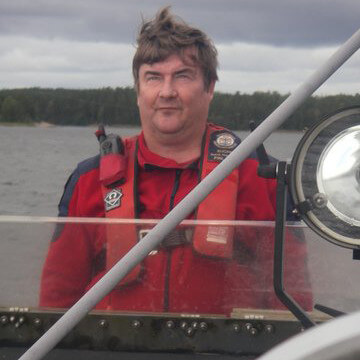
Pekka Huusko
Maritime rescuer
I was inspired to join the maritime rescue activities when a captain of a rescue ship needed help with the ship’s maintenance. We fixed the ship, and after that, the ship was called to Airisto, where someone had seen a distress flare. I found that interesting, and so I was allowed to join a weekend duty.
That’s how it started for me. Now, I’ve been a captain for over 30 years. During the years, I have also acted as the person responsible for the vessels.
The best part of maritime rescue is helping people. It’s grea..
I was inspired to join the maritime rescue activities when a captain of a rescue ship needed help with the ship’s maintenance. We fixed the ship, and after that, the ship was called to Airisto, where someone had seen a distress flare. I found that interesting, and so I was allowed to join a weekend duty.
That’s how it started for me. Now, I’ve been a captain for over 30 years. During the years, I have also acted as the person responsible for the vessels.
The best part of maritime rescue is helping people. It’s great to see happy faces after we have helped those in need. It’s great being at the sea, mostly regardless of weather.
Difficult situations, which are fortunately rare, include cases where the machinery or the navigation equipment of my ship fail in bad conditions, or where the members of the crew get ill or hurt during an operation. The saddest situations are those where the victim has perished. My most unforgettable moment has been lifting a dead person to the surface. In that case as well, alcohol and too much speed had caused the accident. In these types of cases, it’s important to remember crew debriefing.
The increased speed and technology of the rescue ships require the crews to practice more and more at the sea. The volunteers receive more and more operations from the authorities, which is good – we are trusted.
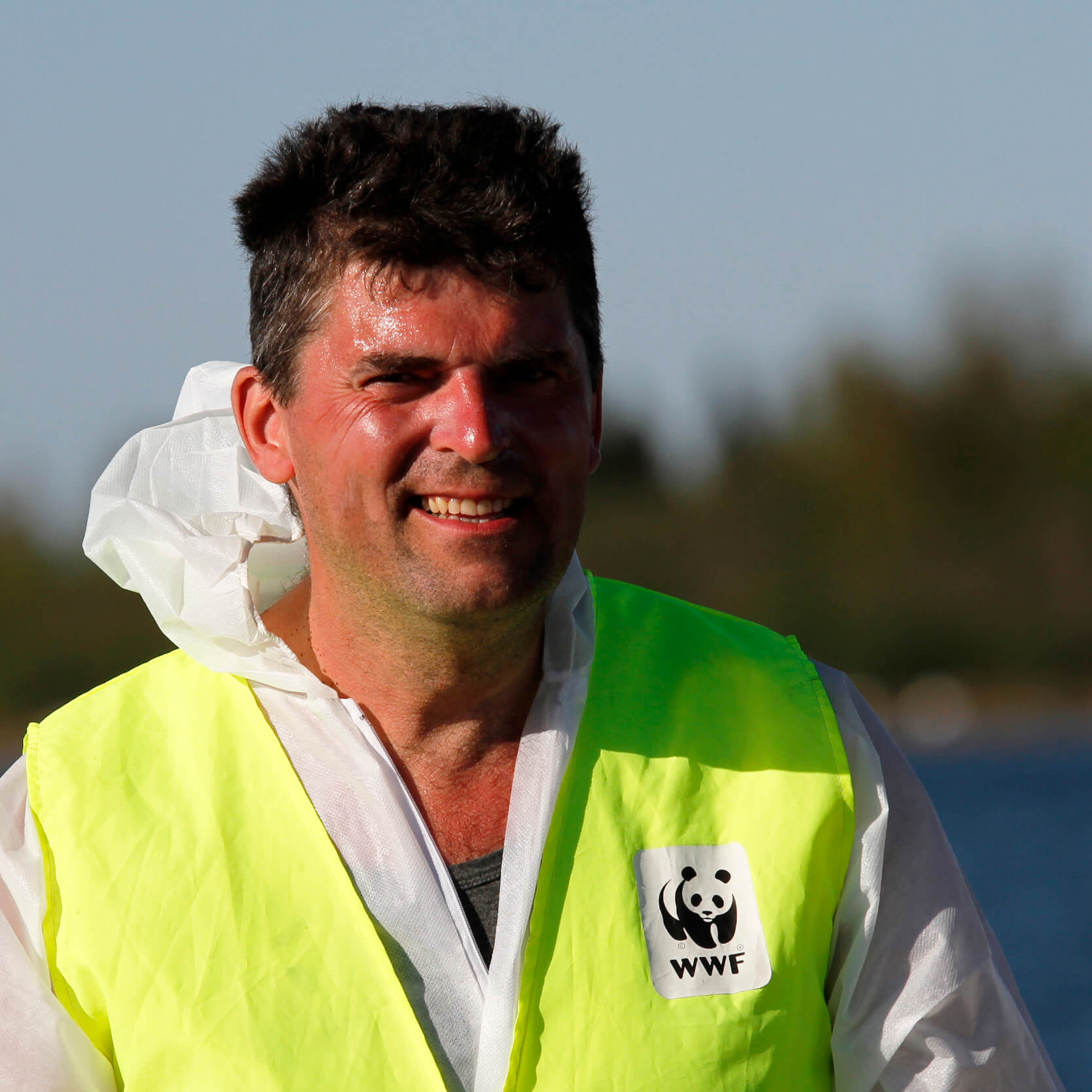
Petri Jaarto
Oil destructor
As volunteer oil destructors for the WWF, we support the authorities during an oil leakage by cleaning the shores from oil and taking care of the oil-stained animals. The shores to be cleaned vary from rocky islands to green sea or lake coves. For example, we have cleaned vital islets for birds during the nesting season.
Normal health and mobility are sufficient for cleaning the shores. The areas to be cleaned can sometimes a bit difficult. Good stress resistance is good to have, since the work is slow and can take months, at wor..
As volunteer oil destructors for the WWF, we support the authorities during an oil leakage by cleaning the shores from oil and taking care of the oil-stained animals. The shores to be cleaned vary from rocky islands to green sea or lake coves. For example, we have cleaned vital islets for birds during the nesting season.
Normal health and mobility are sufficient for cleaning the shores. The areas to be cleaned can sometimes a bit difficult. Good stress resistance is good to have, since the work is slow and can take months, at worst. The working period of a single volunteer ranges from one day to three days, according to their coping, after which, there is a mandatory resting period. Working with oil-stained animals always requires special skills, and a veterinarian is always part of the care team.
There are many tasks available in the oil destruction teams, according to the skills and wishes of each volunteer. In the operations at the shore, the task range from the actual oil destruction to team and group leadership. The operations also need storage managers and spokespersons, as well as assistant trainers to guide untrained volunteers.
WWF organises training and practices for the volunteers. Thanks to good protective equipment and trained team leaders, working with oil is safe.
I’ve worked in the oil destruction teams since they were established. The best thing is to see how all volunteers commit to maintaining a clean environment together. It would be great if we were never called to a real operation.

Juhani Salonsaari
Preparedness duty worker
As a preparedness duty worker, my operation begins when the authorities decide to call Vapepa to assist them. I receive an SMS from the emergency exchange with the phone number of the on-site authorities and background information on the incident. I call the authorities and receive more information on the operation, as well as specifications about the kind of assistance that is needed of Vapepa, and details about the meeting point. After this, I start alerting the emergency teams.
A good preparedness duty worker has keen sensors:..
As a preparedness duty worker, my operation begins when the authorities decide to call Vapepa to assist them. I receive an SMS from the emergency exchange with the phone number of the on-site authorities and background information on the incident. I call the authorities and receive more information on the operation, as well as specifications about the kind of assistance that is needed of Vapepa, and details about the meeting point. After this, I start alerting the emergency teams.
A good preparedness duty worker has keen sensors: they know the resources Vapepa has in the area in question and know how to offer them to the authorities’ aid. They also know if the preparedness is not sufficient and inform the authorities of the resources in neighbouring areas. Nobody is worth more than anyone else, and co-operation is the key to success.
In major emergencies, in particular, calling the resources is quite a job. My team includes seven duty workers. Every month, one of them is the chief duty worker and another one is the deputy chief duty worker. When an emergency is prolonged, the duty worker and the on-site Vapepa leader need to keep in touch regularly and specify when additional helpers are needed.
I believe practice is the best way of learning this job. The most important qualities of a duty worker are calmness and the right attitude: they’re a good listener and they know how to say things briefly.
During the years, the operations that have stuck in my mind are the ones where a child or a lightly-clothed elderly person have disappeared in winter. In these cases, we start using all of our resources right away.
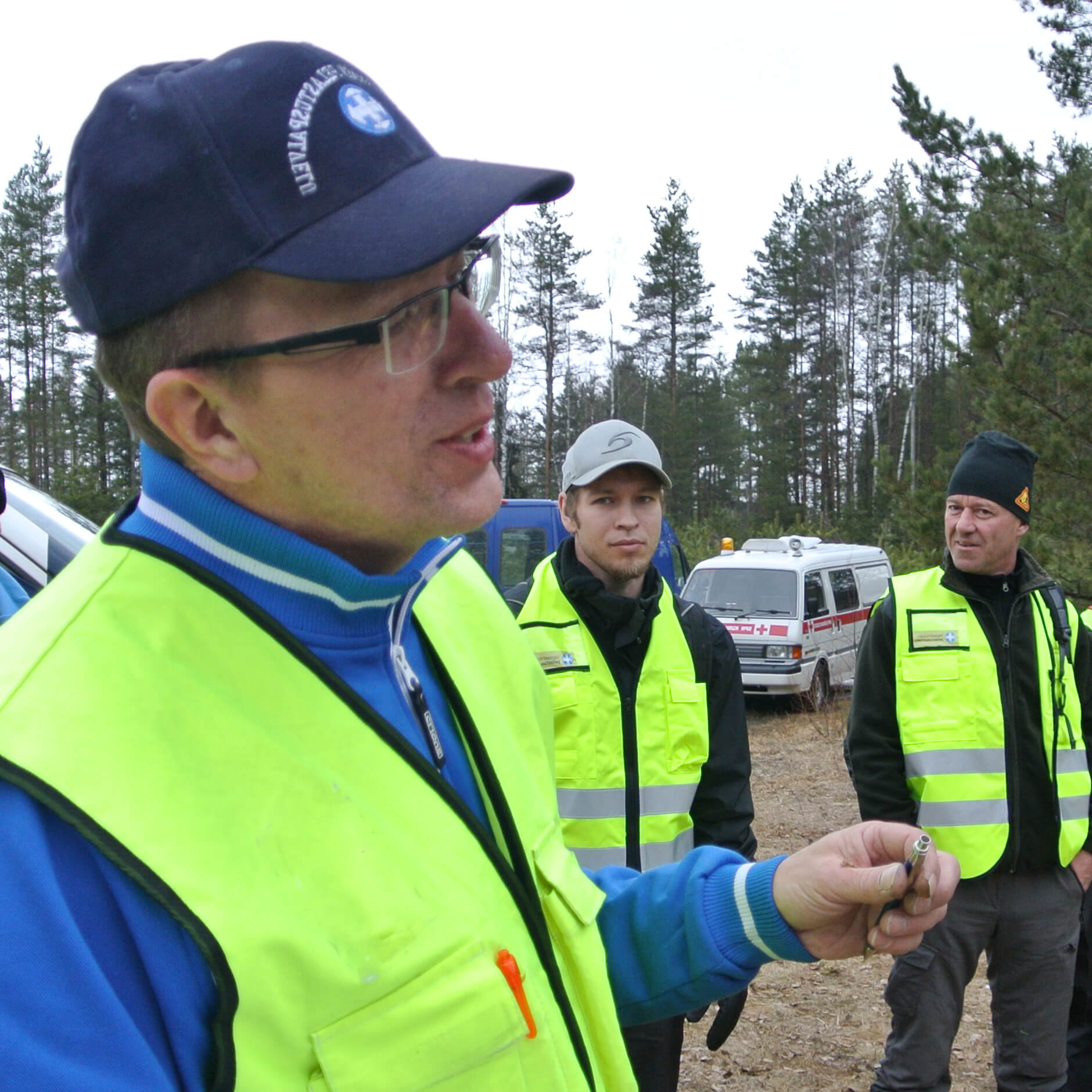
Aki Valonen
Preparedness trainer
As a preparedness trainer, I organise Vapepa basic courses and search and rescue trainings at various levels. In search and rescue operations, I quickly train volunteers to work in various search and rescue methods. I have also visited hunting clubs, village associations, and first aid groups to tell them about Vapepa and its methods.
As a trainer, I aim to be at the same level with my audience. Even if I teach the same things in each course, it’s good to plan the training so that the audience will feel like they are getting some..
As a preparedness trainer, I organise Vapepa basic courses and search and rescue trainings at various levels. In search and rescue operations, I quickly train volunteers to work in various search and rescue methods. I have also visited hunting clubs, village associations, and first aid groups to tell them about Vapepa and its methods.
As a trainer, I aim to be at the same level with my audience. Even if I teach the same things in each course, it’s good to plan the training so that the audience will feel like they are getting something out of it. The trainer must have an understanding of how a Vapepa leader or an individual volunteer, for example, will act in an emergency, and that’s why I often join them in the field, as part of the search and rescue chain.
I also try to develop the various teaching methods so that the audience won’t simply sit still looking at slideshows. Each preparedness trainer has their own methods and style, and I think that’s a good thing. I sometimes go to the basic courses taught by others and ‘steal’ ideas for my own trainings. I’ve noticed that the best way to learn something new is to teach others about it.
Usually, the participants in a course are surprised to hear that Vapepa has been active for over 50 years. Some people are worried about the activities binding them too much, and they are amazed when I tell them it’s entirely voluntary: each person gets to decide whether they will join an operation when they are called.
The best thing is to see the people I have trained working in real situations and noticing that they know what to do. That’s when I feel I have achieved something as a trainer.
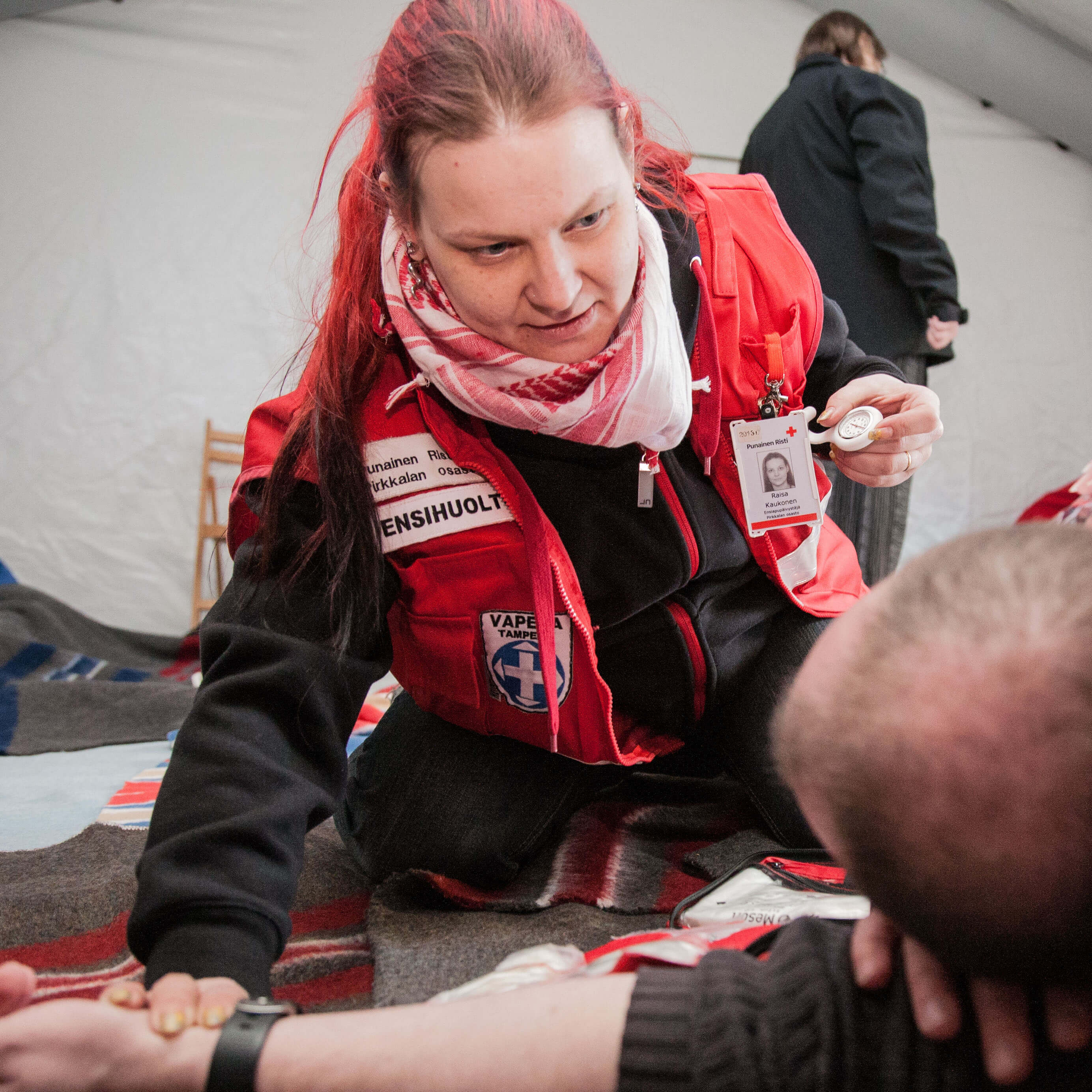
Raisa Kaukonen
Primary care volunteer
Often, the primary care operations are fires. As primary care volunteers, we see to it that the people have food, clothing, the necessary medication, and a roof over their head after the incident. First aid skills are also important so that we can treat minor injuries, when necessary.
Emotional support is always involved in all of this. While I take notes to arrange for assistance, I also hold the person’s hand and listen to how they are feeling.
The emergencies seldom occur during daytime. That’s why the preparedness plan..
Often, the primary care operations are fires. As primary care volunteers, we see to it that the people have food, clothing, the necessary medication, and a roof over their head after the incident. First aid skills are also important so that we can treat minor injuries, when necessary.
Emotional support is always involved in all of this. While I take notes to arrange for assistance, I also hold the person’s hand and listen to how they are feeling.
The emergencies seldom occur during daytime. That’s why the preparedness plan and the agreements with our partners must be ready so that we can access a shop to get some clothes in the middle of the night, for example.
After an incident, a person is often in shock. Each person reacts to incidents differently, and the outlook people have often depends largely on the attitude of the person helping them. It’s important to face people at their level, and think about what you’re about to say. A person in shock can remember many things afterwards, and they may begin to think why the volunteer said those things.
Primary care skills also strengthen the everyday skills. I’m more aware of the what I need to do in case of a blackout or a fire. And our children bring their friends to our house if they get small injuries – they know mother can help.
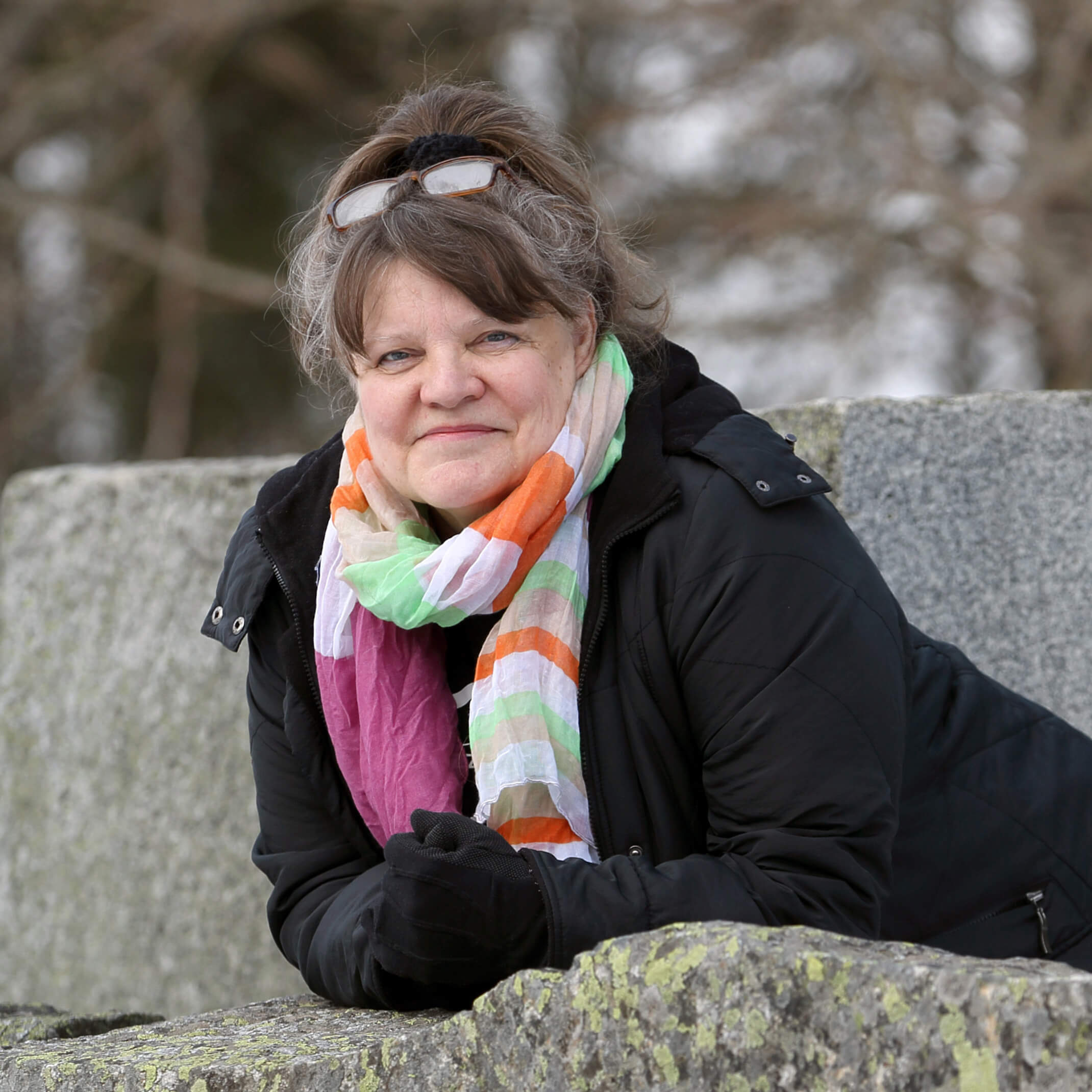
Tarja Rasimus
Provisions supplier
Provisioning situations are always different from each other, and the provisioning is organised case by case. If it’s a search and rescue case, the beginning of the search has critical importance. Good communication with the leaders is vital so that the supplier knows what to prepare for.
Sometimes, the situation ends quickly, and sometimes the search can last several days. For a supplier, this is a challenge on its own, since the number of searchers and the duration of the search varies.
Organising the provisioning is qui..
Provisioning situations are always different from each other, and the provisioning is organised case by case. If it’s a search and rescue case, the beginning of the search has critical importance. Good communication with the leaders is vital so that the supplier knows what to prepare for.
Sometimes, the situation ends quickly, and sometimes the search can last several days. For a supplier, this is a challenge on its own, since the number of searchers and the duration of the search varies.
Organising the provisioning is quite a puzzle. I have heated boxes in my storage. The local fire brigades, the Martha Organization, and the Rural Women’s Advisory Organisation have cookers, pans, and ladles. Groceries are obtained from local shops.
Having good relations with the local shops is important to get access to groceries in the middle of the night, if needed. The things we get from the shops are sliced bread and cold cuts to make sandwiches, for example. If the search is prolonged, we cook a warm meal in addition to the sandwiches.
If the site has electricity, we prepare the meals at the site. If there is no electricity, we use the facilities of the fire brigade, for example, and take the foods to the site in heated boxes. Depending on the scale of the situation, I ask the suppliers of the local organisations to join us, such as the women from the fire brigade or the Rural Women’s Advisory Organisation and the Martha Organisation.
In addition to searches, we offer provisions for the participants of the Vapepa trainings, for example. Training is useful because established routines give confidence and reduce stress. In real situations, there’s no point in being anxious – we simply need to trust everyone to do their part.
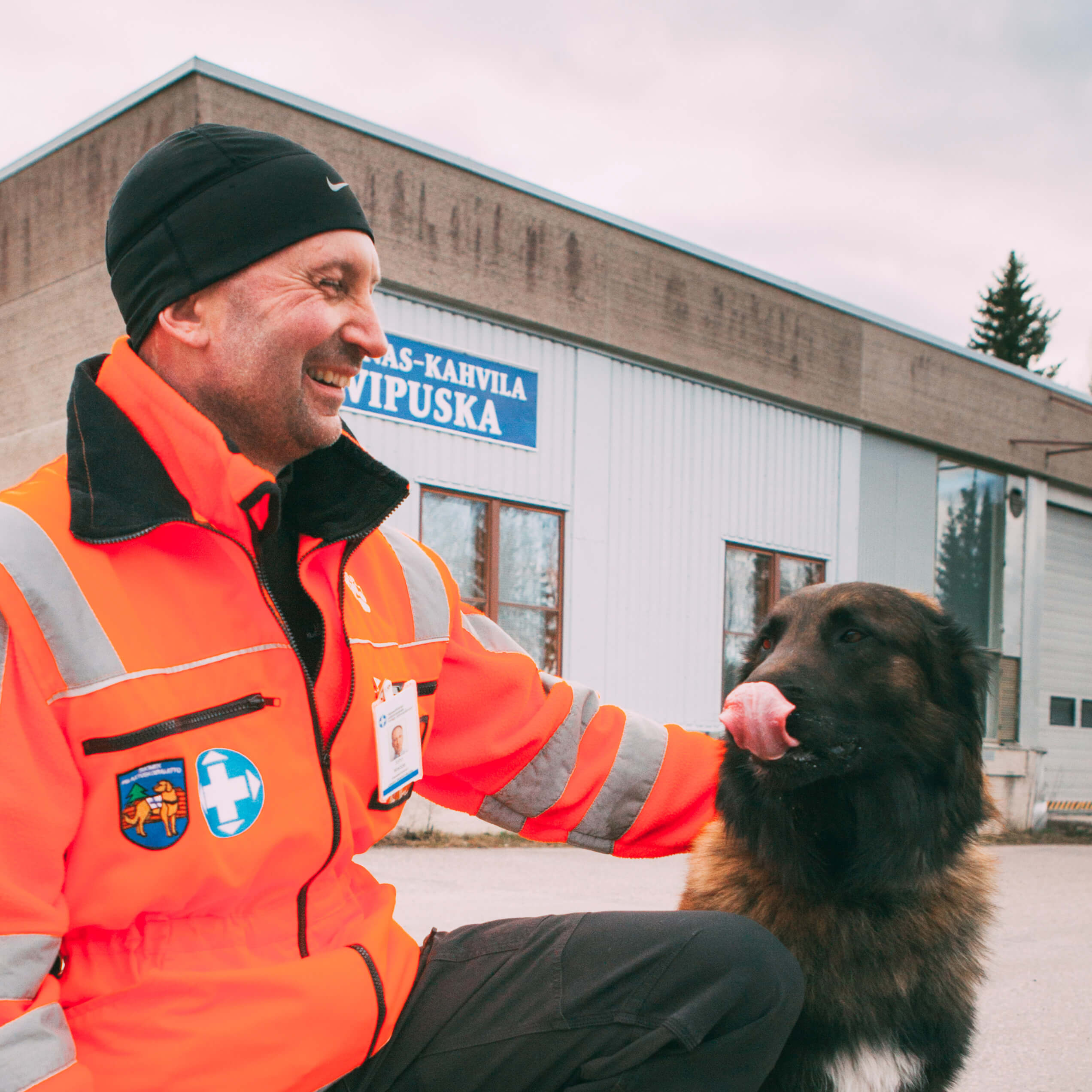
John Wedde
Rescue dog handler
When searching for a missing person, the rescue dog and its handler will be given an area to comb through and to search for any people in the area. If there is a person in the area, the dog can catch their scent in the air. Another way is to use a tracker dog to see if anyone has passed through the area.
These days, rescue dogs have several skills and they can work in the country, in populated areas, or in buildings. We don’t yet have scent-identifying dogs. Perhaps in the future, dogs can look for a specific person within a crow..
When searching for a missing person, the rescue dog and its handler will be given an area to comb through and to search for any people in the area. If there is a person in the area, the dog can catch their scent in the air. Another way is to use a tracker dog to see if anyone has passed through the area.
These days, rescue dogs have several skills and they can work in the country, in populated areas, or in buildings. We don’t yet have scent-identifying dogs. Perhaps in the future, dogs can look for a specific person within a crowd by following their scent.
A good rescue dog is not too big and not too small. In addition, it needs to have mental strength. This is like car sports: if you want to drive off-road, you won’t want a passenger car. The handler must also have a good physical and mental balance. During the operations, you can meet anything, such as hysterical or injured people.
I joined because I have an innate need to help others. You get to spend a lot of time outdoors, and work with an animal. Some people and dogs train once a week, while the most active ones train three or four times a week. For a beginner, it takes two to four years of training before you can join an emergency team. In our trainings, everyone also participates in activities other than training their own dog. For example, acting as ‘the target’, which means the person being searched for.
I’ve learned that you need to always trust your dog. When the dog signals that something needs investigating, it’s best to investigate.
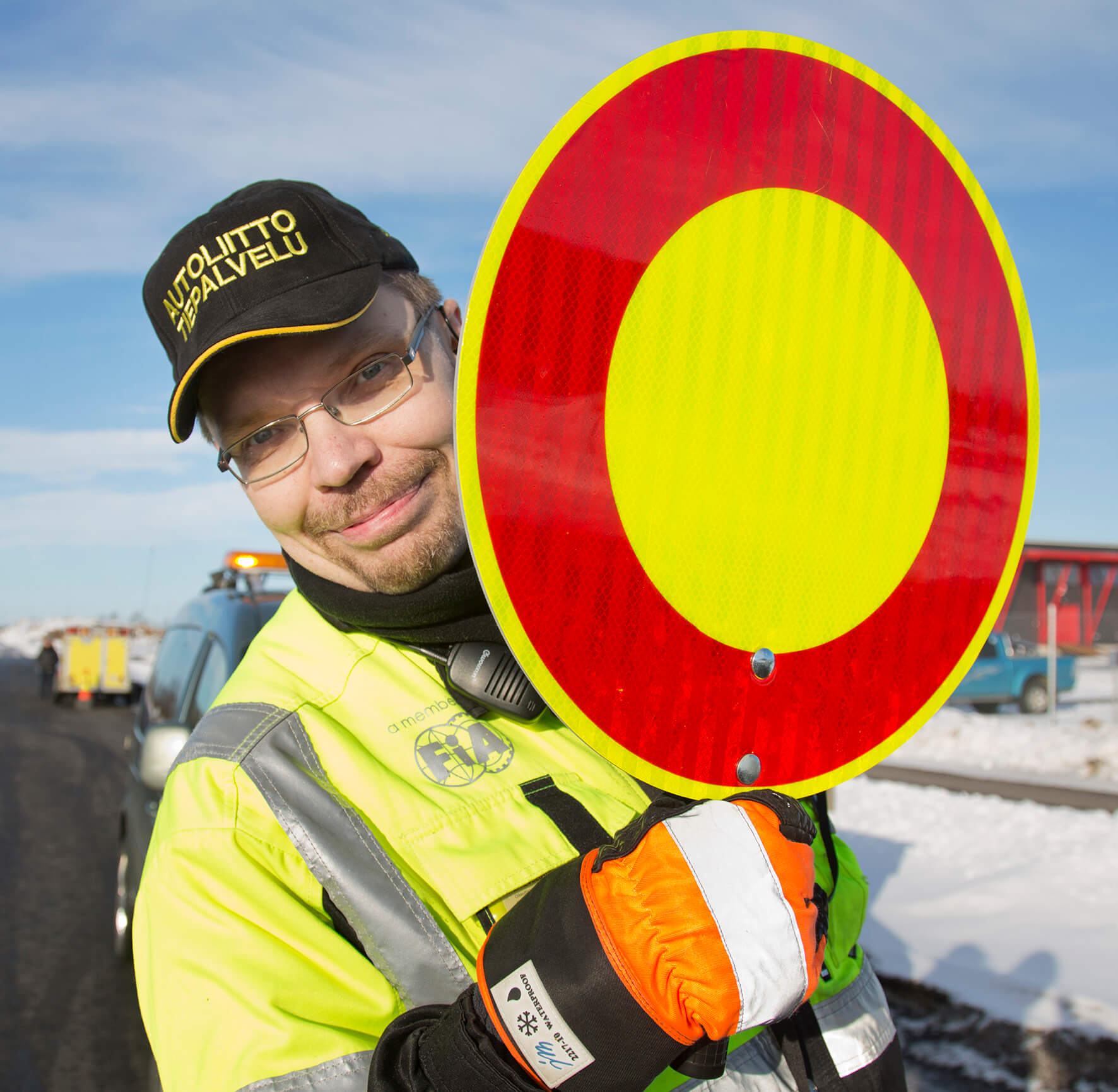
Marko Laine
Traffic controller
The traffic controller starts working on the authorities’ request. The call is made to me or the other person on duty. We check the situation, how much assistance is needed, and which of our road service workers are the closest and can leave for the site.
The largest detour arrangements can require as many as 5–7 people, but closing a road is usually a one-person job. Typically, traffic control at an accident scene takes 3–5 hours. Usually, we try to switch volunteers every few hours.
For the more demanding operati..
The traffic controller starts working on the authorities’ request. The call is made to me or the other person on duty. We check the situation, how much assistance is needed, and which of our road service workers are the closest and can leave for the site.
The largest detour arrangements can require as many as 5–7 people, but closing a road is usually a one-person job. Typically, traffic control at an accident scene takes 3–5 hours. Usually, we try to switch volunteers every few hours.
For the more demanding operations, we bring in Allu, the crisis vehicle of the car service. Allu carries traffic cones, VHF phones, first aid supplies, stretchers, a table for leading, and other supplies we may need. The road service workers have basic supplies in their own cars, which means that Allu is not needed in normal incidents.
The best part of the job is being one link of the rescue operation. I have worked in road service for 18 years already. Successes give me the energy to continue this work. The desire to help stems from my childhood: my parents did active voluntary work in the local sports club.
These days, traffic is dangerous. Sometimes, when I leave home and close the door, I think that it would be nice to come home in one piece.
Accidents where human lives have been lost are the most difficult. Although, we don’t always know how serious the situation is when we are at the site. For traffic control, it’s relevant to know if the road is closed and when the exceptional arrangements will end. This is also the information we give to those enquiring. The more detailed notifications are the responsibility of the authorities.
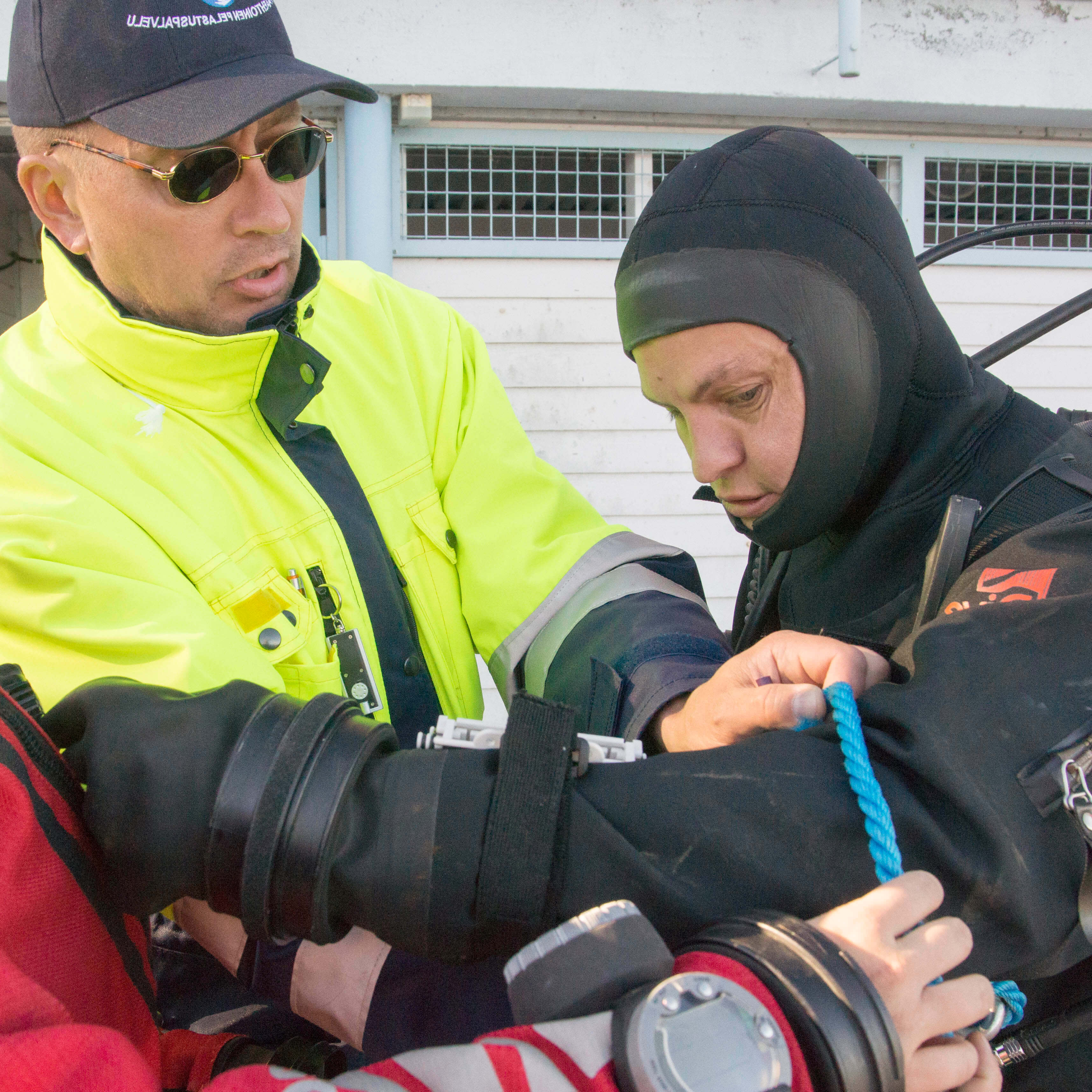
Ari-Pekka Arponen
Vapepa diver
Vapepa diving is underwater searching to support the authorities. What we search for is usually the body of a person, but sometimes we also look for objects – for example, we have searched for money robbed from a bank or for a weapon.
Diving experience and meticulousness are required. In the murky waters of Finland, you can’t always even see what is within arm’s length. If you have an entire lake to go through, the search can take weeks.
In addition to diving, the volunteers are also needed to drive a boat, work th..
Vapepa diving is underwater searching to support the authorities. What we search for is usually the body of a person, but sometimes we also look for objects – for example, we have searched for money robbed from a bank or for a weapon.
Diving experience and meticulousness are required. In the murky waters of Finland, you can’t always even see what is within arm’s length. If you have an entire lake to go through, the search can take weeks.
In addition to diving, the volunteers are also needed to drive a boat, work the ropes, or take care of provisioning. We always work as a team and organise a debriefing session together. It’s important to listen to your heart. If a diver announces in the middle of an operation that they don’t want to go to the water, others won’t argue them. There’s no need to explain the refusal.
I have worked as a Vapepa diver for more than ten years. The most rewarding moment is the moment when you find what you’ve been looking for.
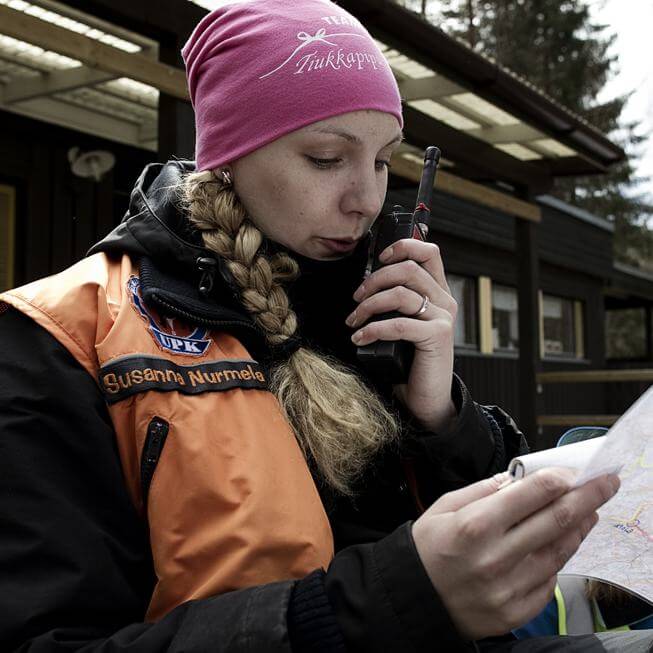
Susanna Nurmela
Vapepa leader
As a Vapepa leader, I’m a kind of a valve between the authorities and the volunteers. I receive an operation from the authorities, and then I inform the other volunteers about it. Of course, I also deliver information the other way: from the volunteers to the authorities.
At the leading site, the team of the Vapepa leader include a secretary, a person responsible for communications, and clerks. At the Central Uusimaa area, we often have a deputy leader supporting the Vapepa leader. Together, they create the maps of the search are..
As a Vapepa leader, I’m a kind of a valve between the authorities and the volunteers. I receive an operation from the authorities, and then I inform the other volunteers about it. Of course, I also deliver information the other way: from the volunteers to the authorities.
At the leading site, the team of the Vapepa leader include a secretary, a person responsible for communications, and clerks. At the Central Uusimaa area, we often have a deputy leader supporting the Vapepa leader. Together, they create the maps of the search area, for example. Working together with a more experienced Vapepa leader is important, since you can learn a lot about performing the tasks from them. I’m one of the newest Vapepa leaders in our area, since I participated in the training a year or so ago.
I think the qualities of a good Vapepa leader are stress resistance and calmness. They need to be able to listen to others: You need to listen to the volunteers talking about their feelings before departing for the operation, alerts of even the smallest discoveries during a search and rescue, and the experiences the volunteers have had in the field. When situations change quickly, you need to seize the moment.
As a Vapepa leader, I work as a pair to an official. The co-operation is the most fruitful when we find a mutual wavelength, the authorities’ orders are clear, and everyone stays within their area of responsibility. You also need the courage to make suggestions: for example, the operation in question may be the first operation of this type that the police patrol has ever experienced.
Although the emergencies themselves are very taxing and the atmosphere is very serious, everything else around you gives you positive energy. Here, you get to work with great people!
